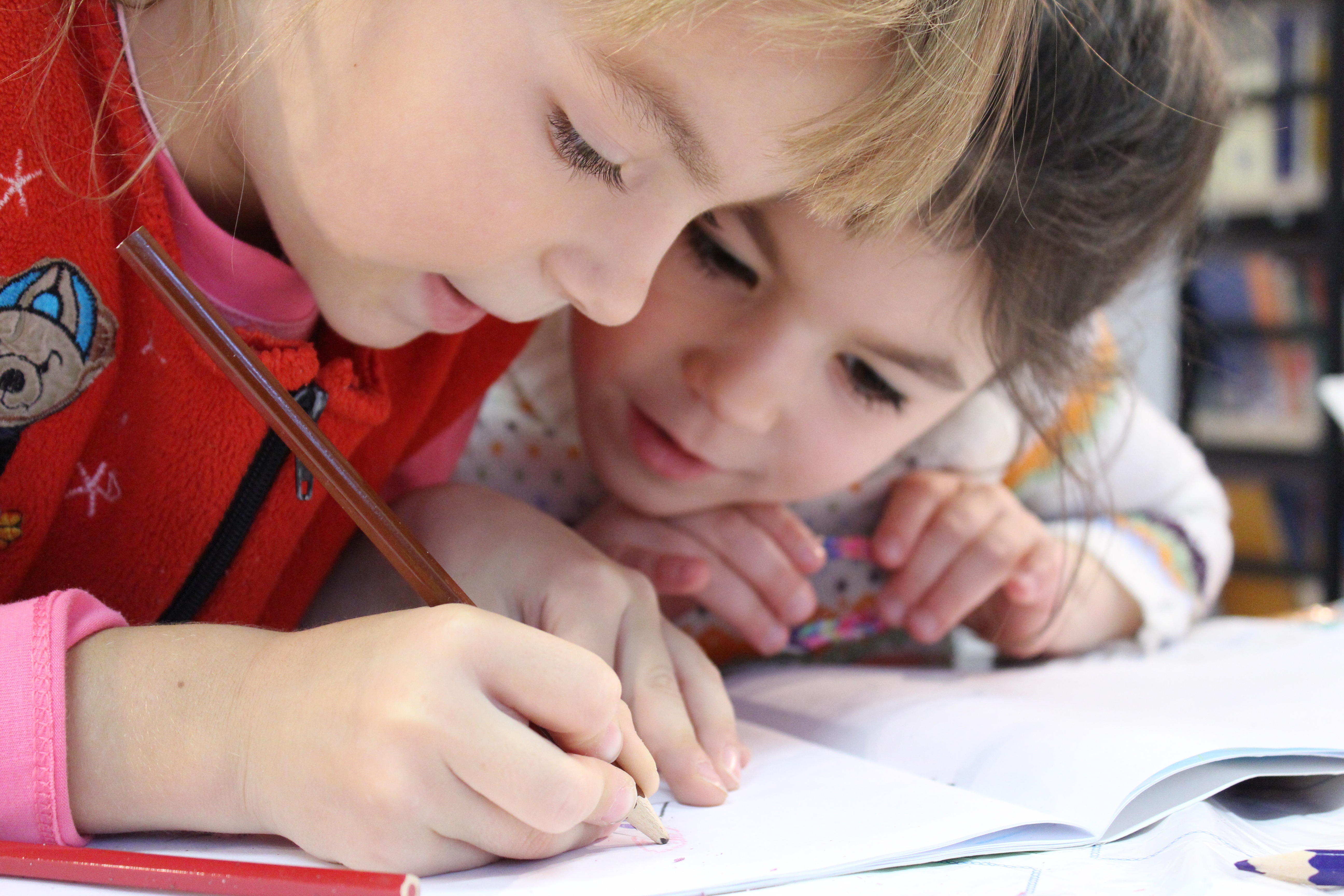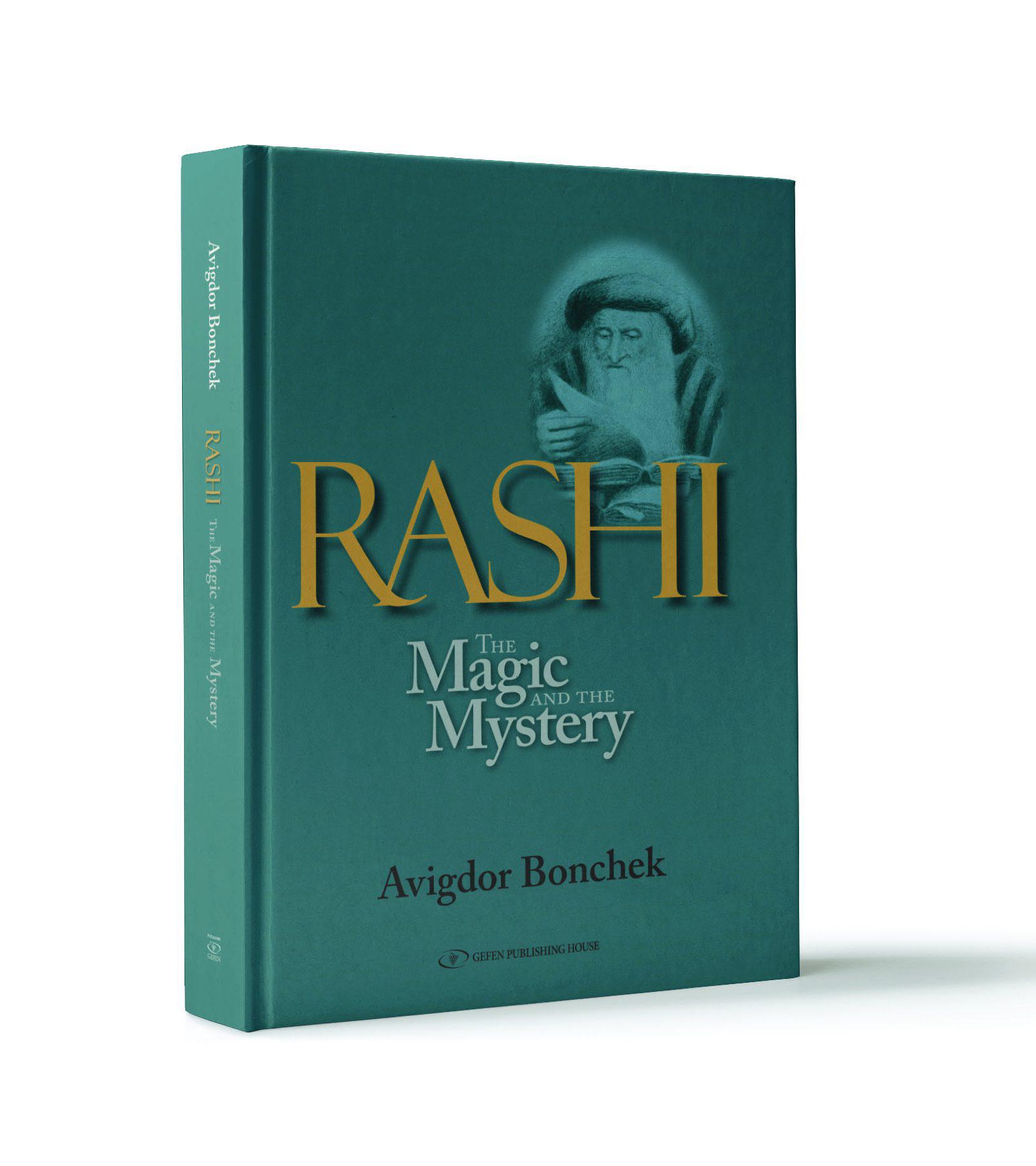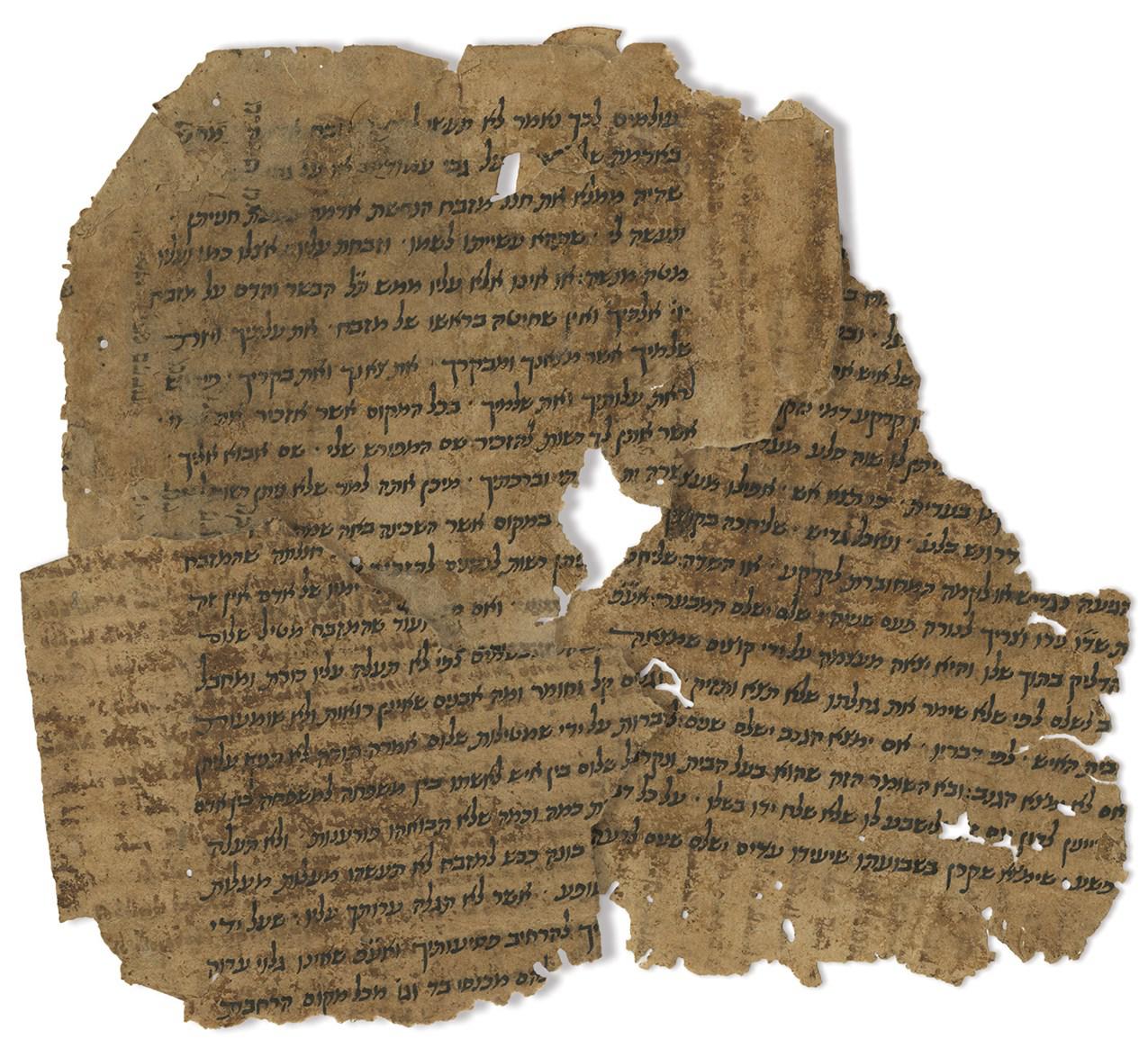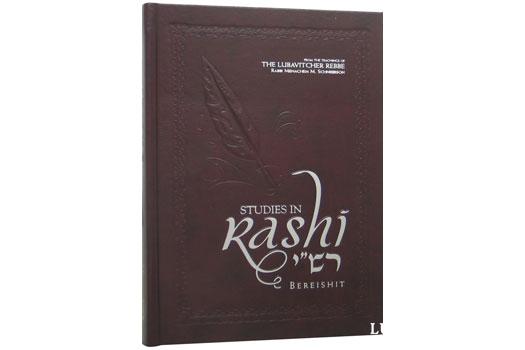Teaching the Teachers
Studies in Rashi: From the Teachings of the Lubavitcher Rebbe, Menachem M. Schneerson
Translated by Y. Eliezer. Danzinger
Kehot Publication Society
Rashi: The Magic and The Mystery
Avigdor Bonchek
Gefen Publishing House Ltd.
The Goal of Torah Education
I spoke to an Israeli kindergarten teacher this summer who explained to me how the philosophy of early childhood education has changed. “Today,” she said, “the philosophy is that children teach themselves. The job of the teacher is merely to set up the learning experiences so the child can discover everything on their own.”
And then with a wry smile, she said, “Of course, it is still the teacher who has to set up the lesson. But we act as if it is the child’s own discovery.”
It is true that children are not simply blank slates, empty vessels waiting to be filled. They come to the classroom with distinct personalities and shaped by their own past experiences—primed to one day make a contribution that is uniquely their own. And yet, the fact that they will each forge their own path one day does not mean that our job as teachers of Torah is merely to ensure that they have the tools at their disposal to find their own voice and direction. For the wisdom of Torah is not discovered—it is uncovered. The wisdom of Torah is not created—it is revealed.
(Author’s footnote: In some sense, this is true of all knowledge: we do not “create” mathematics or the natural sciences. But whereas with math and science, our mental faculties and careful observation are sufficient tools for us to extract knowledge, the truth of Torah is essentially G-dly and beyond human reason. Hence, without the revelation at Sinai, we would have no way to access it.)
This has deep implications for how we teach Torah. For while it is a mitzvah to engage with the words of Torah, there are also specified “rules of engagement.” Insofar as there is room for human contribution and innovation in Torah, it is possible only so long as we are faithful to the axiomatic guiding principles outlined at Sinai. Once we veer from this framework, we can no longer be assured that what we espouse has any G-dly validity. Our primary role as teachers of Torah is not to simply engage students, but to ensure that our students are able to faithfully transmit the essence of Torah to the next generation.
If secular models of education have seen the teacher move from being the sage on the stage to the guide on the side to the peer in the rear, the Jewish model is one in which our teachers remain always present, their words of guidance and encouragement echoing on our ears and steadying our course even years after we have gone off on our own.

Finding a Torah Teacher
So how does one learn how to approach a page of Torah? How does one ever make the leap from technical decoding, from the memorized knowledge, to “standing at Sinai”—actively engaging with a living, holy text and experiencing authentic revelation?
The noted teacher of Tanach, Nehama Liebowitz (who requested no appellation other than “morah” [teacher] on her tombstone) was once asked how she learned to study Torah. She answered, “Rashi was my teacher; Ramban (Nachmanides) was my teacher.”
Her answer is profound. What kinds of questions are interesting, what kinds of nuances matter, what kinds of explorations should we undertake. When we take the time to see how the great commentators of Torah approach Chumash [the Five Books of Torah], their guiding hand steadies us as we make our own forays into the meaning of the text.
And of all the great teachers and commentators of Torah, Rashi stands at the forefront. For generations, the first formal introduction to holy texts for children was Chumash with Rashi. Rashi is so deeply integrated into the way that we read Chumash today that it is hard for us to imagine how we might (mis)understand Chumash without him.
How Learning Fails
As a child, it was hard for me to appreciate the integral role that Rashi played. Rashi somehow seemed distinct from the text, a separate repository of information. Here is what the Chumash said, and sometimes, Rashi gave us additional information. If Rashi was making a grammatical clarification, chances are, our teachers would skip it. In later years I read midrashim or other exponents, and then Rashi appeared to be just one of a variety of ways to explain the text.
At some point, I was introduced to some of the commentators on Rashi, and then there were new details to master and remember. What was Rashi’s question? Why did he answer it one way and not another? Sometimes the commentators disagreed and then there were two approaches to consider. What I gleaned from this was that Rashi was complicated—that there was more than that met the eye—and if I wanted to really know all there is to know about Rashi, I would have to do a lot of studying.
So much of my reading of Rashi (like so much of my education in general) “went over my head.” (As the saying goes, education is wasted on the young.) It was like passing the written test for a driver’s permit without ever having gotten behind the wheel. I may have mastered the information, but I did not really see “how it came together.”
Learning by Doing
Rashi: The Magic and the Mystery, by Dr. Avigdor Bonchek, is a short and readable text that introduces readers to Rashi’s unique contribution and invites them to engage in their own exploration of the text using some key strategies.
Bonchek begins by outlining a brief history of Rashi’s life and the scope of his contributions. (It was from Bonchek that I learned that the first dated printed Jewish book, in Calabria, Italy, 1475, was Rashi’s commentary on the Torah.)
In view of the fact that Rashi’s goal is explaining the p’shat—the simplest explanation of the text—it is always worthy of comment when Rashi finds it necessary to cite a midrash (particularly when other commentators are able to explain the text without resorting to midrashic sources). In one chapter, Bonchek outlines different ways in which Rashi uses Midrash. Sometimes, Rashi explicitly rejects a midrash as incompatible with the peshat; in other cases, Rashi will cite a midrash as evidence that a potential interpretation of the text is incorrect.
Another fascinating exploration is Bonchek’s comparison of the commentary of Rashi and Rashbam. Rashbam, Rashi’s grandson, also wrote a commentary meant to explain the p’shat of the Chumash. Sometimes they differ, and the reflection on why Rashi chose a different “simple reading” than Rashbam can also be edifying and insightful.

Bonchek divides Rashi’s comments into Type I comments and Type II comments. Type I comments answer a question or problem in the text. Type II comments are more applicable when we see a Rashi that seems to restate the obvious (and without any apparent question). These comments are meant to avoid a possible misreading that might cause the student to veer away from the plain meaning of the text, like a signpost along a road reminding us to keep on the right as we approach the fork. In this case, to see what Rashi is doing, we need to find the possible misunderstanding he is trying to help us avoid.
Bonchek’s examples are fascinating, and he often invites us to consider a response to his questions before offering his own solution. (In most cases, these questions have been anticipated and addressed by some of the many super commentaries on Rashi.) Indeed, most interesting to me in this book was the author’s invitation to readers to undertake their own analysis of Rashi. He does so through the presentation of carefully selected problems that reward our nascent efforts to read Rashi with greater attention and care. It is perhaps no surprise that he credits Nehama Liebowitz as being the inspiration for his pedagogical approach.
The Craft of Teaching
In my late teens, I first encountered the Rebbe’s work on Rashi, including a slim volume outlining the “principles” governing Rashi. For me, it was one of those moments that radically transformed my thinking. It introduced me to the idea and the methods of doing a “close reading” of a commentator. The Rebbe framed Rashi, first and foremost, as a presenter of p’shat and because what is simple depends on one’s prior experience, further framed it as “what is simplest to a five-year-old.” Even when midrash was brought to “fill in the gaps” of a story, it was brought because in some way, it would lead to a reading that was more straightforward to the five-year-old mind than the unembellished account in the text.
When Rashi put forth multiple explanations, it was because each explanation was problematic in a way that made it insufficient on its own, but also had an explanatory strength relative to the other explanation. At the same time, Rashi spoke, albeit often implicitly, to deep moral truths, and to the essential “unity” of different levels of interpretation.
In a series of discourses, the Rebbe addressed examples of Rashi’s commentary that seem to violate these (or other) principles, but ultimately resolved the questions in ways that demonstrated their consistency. For the scholar (and the aspiring scholar) there was deep edification in the way multiple questions and apparent subtle discrepancies within the text could all give way to a grand solution. The effort in painstakingly following the detailed dissection of problems that seemed at times incredibly pedantic was rewarded by a stunning denouement in which all the strands came together, solving not only the technical difficulties, but revealing an underlying moral instruction and mystical perspective.
About 20 years ago, I began teaching Chumash and Rashi to some adults in my community. As we studied, I wanted to share with them some appreciation for the deep internal coherence within Rashi’s commentary—an appreciation that I had gained from studying the Rebbe’s sichot on the some subject. But the group (who was working with Rashi in translation) would have been overwhelmed at studying the sichot in its original form. So I shared with them the principles on which the Rebbe’s based his analysis: (see for example, Kehot Publication Society’s Studies in Rashi, Bereishit pp. xi-xiv) and then asked students to read Rashi on their own and see what questions arose. With sufficient guidance, they were able to identify many of the questions the Rebbe addressed. And once the questions were their questions, the answers became more satisfying. It was an exciting, but deeply challenging process. (Had I read Bonchek at the time, I might have had an easier time formulating the exercises.)

As an adult, I found the Rebbe’s work on Rashi fascinating. Still, I struggled with the premise that Rashi addresses himself to the p’shat as understood by the young school child. Even adults often feel lost and overwhelmed in attempting to follow the Rebbe’s analysis: too many lines of possibility to explore and reject, to many strands to mentally consider all at once. It would be a rare child indeed—perhaps only the Rebbe himself—who would actually question the text in this way—a spirit of childlike faith and simplicity coupled with absolute attention to detail and a penchant for utter consistency.
And yet the Rebbe was never satisfied with a stripped down, simplistic explanation—one that ignores or glosses over subtle inconsistencies or pushes off explanation for “when the child is older.”
Perhaps one way of resolving this is by seeing Rashi as the ultimate pedagogical guide for the teacher of Torah, providing instruction on how to teach. Seen in this light, the Rebbe’s work is a fascinating explication of the Jewish educational process.
For even while the question concerns itself with particular passages, the answers are spiritual and intellectual fractals, local truths that reflect the whole. Rashi, in clarifying ambiguities, resolving discrepancies, and filling in the “gaps,” implicitly conveys the idea that the Torah, a G-dly text, is unified in its purpose; that truth is consistent with itself; that all knowledge has ethical implications; that even the most esoteric reading is rooted in the simplest understanding of the text. These are the lifelong lessons that the child is meant to absorb from the very first time he learns Chumash and Rashi.
Bonchek asks us to figure out what local difficulty in the text Rashi is solving. But the Rebbe sees Rashi as concurrently doing something more ambitious than simply addressing or forestalling misunderstanding. Rashi shows the teacher that while knowledge is best conveyed in the context of a particular question, each teaching moment has implications that shape and color the entire relationship of the child with Torah. And while the task of learning can be broken into small pieces, the truth and integrity of what is taught can never be adulterated.
The point is not for the child to discover, but to help the child uncover. Like little treasures intentionally hidden in a sandbox that the child is encouraged to dig, the teacher of Torah uses Rashi as his or her guide to carefully set up the lesson so that the children will ask certain questions. “Ah,” says the teacher, “What a wonderful question. Look! Rashi asks it too! Let’s see how he answers it!”
Read more Book Reviews:
MyStory: Forty-one Individuals Share Their Personal Encounters With The Rebbe
Jewish Educational Media, 2017
Early Years: The Formative Years of the Rebbe, Rabbi Menachem M. Schneerson
Boruch Oberlander & Elkanah Shmotkin
Kehot Publication Society & Jewish Educational Media
For the Love of Truth: Jews, Christians and Missionaries
Rabbi Immanuel Schochet
Mosaica Press, 2016

Be the first to write a comment.